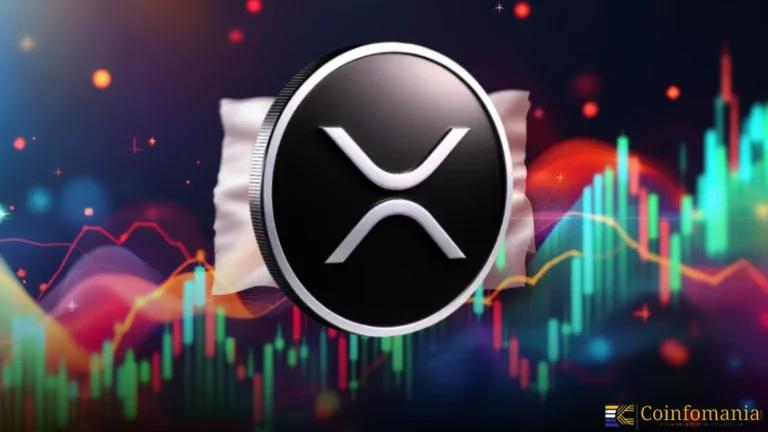Moonrock Capital CEO Simon Dedic Positions Silencio as a Core DePIN Player and Highlights its Global Reach
Discover Simon Dedic's insights on Silencio Network's expansion, illustrating the transformative role of DePIN platforms in global data gathering.

Quick Take
Summary is AI generated, newsroom reviewed.
Moonrock Capital CEO Simon Dedic described Silencio Network as an example of DePIN growth, with over 1 million users.
Silencio Network gathers noise data from 235 countries, using peaq blockchain for decentralized storage and access.
Decentralized Physical Infrastructure Networks reduce reliance on centralized systems.
Moonrock Capital CEO Simon Dedic shared a June 3 post highlighting Silencio’s growth. He said distribution is a key factor in this cycle. He noted Silencio now has over 1,000,000 users with 90% on-chain participation. The network’s data covers 235 countries and territories in total. It maps 57,000 square kilometers and 1.29 billion hexagons accurately. Silencio has recorded 47,800,000 street measurements and 10,600,000 venue observations. He mentioned that Silencio’s $30M fully diluted valuation remains low, even as the token burn rate climbs, marking underappreciation. “Give it a few years, and I wouldn’t be shocked if Silencio is powering AI infrastructure across industries,” Dedic said.
Silencio’s Decentralized Model for Real-World Use
Silencio Network’s model focuses on noise pollution, turning smartphones into data collection sensors. Over 460,000 sensors operate worldwide. The network processes 100,000 daily on-chain transactions for noise data. Collected data supports industries like real estate, travel, and urban planning. Recorded noise samples undergo verification to ensure data accuracy and reliability. This approach can help local communities, governments, and businesses understand noise patterns. Silencio’s model is a DePIN that decentralizes data collection via blockchain.
Interest Grows in DePIN Platforms Like Silencio
Recent activity showed strong global interest in DePINs like Silencio Network. Silencio reported $112.7 million in allocation requests, far exceeding its $500,000 goal. Nonetheless, the team limited accepted funds to $1.3 million with a community-first focus. This decision reflects a trend toward decentralization and sustainability over aggressive fundraising. DePINs are changing how real-world infrastructure is managed and financed. Such models avoid reliance on large investors, favoring broader user participation. The growth of these platforms underscores the evolving DePIN ecosystem globally.
Silencio’s data offers applications beyond basic noise monitoring. Travelers can use noise data to select quieter hotels and neighborhoods. Real estate investors may analyze sound profiles before making purchase decisions. City officials can consult data to inform urban planning and zoning strategies. These insights may influence policy decisions and private sector planning alike. Focusing on noise data creates a unique dataset within DePIN platforms. Silencio’s real-world focus demonstrates the potential of data-driven decentralized networks.
How peaq Enables DePIN Platform Development
peaq blockchain serves as the Layer 1 network supporting Silencio’s operations. It offers modular tools suited for developing DePINs efficiently. Features include machine IDs, data verification, role-based access, and data storage. Integration with Peaq provides a flexible architecture for building on-chain systems. Such architecture allows developers to deploy DePIN networks with minimal friction. Peaq’s design highlights the importance of foundational infrastructure for decentralized data networks. Robust blockchain layers like Peaq ensure reliable data integrity and scalability. By leveraging Peaq, projects gain access to proven blockchain capabilities.
DePIN platforms offer an alternative to centralized data collection models. They rely on community participation and token-based incentives for data gathering. This model reduces single points of failure while increasing transparency. Data is gathered directly from contributors instead of large corporations or institutions. Participants earn rewards while contributing to infrastructure supporting logistics and monitoring. This approach promotes equitable value distribution across the network ecosystem. By using DePIN platforms, users foster broader engagement and shared benefits. This system can support various industries such as environmental monitoring and logistics.
Silencio’s Real-World Focus Highlights Decentralized Model Benefits
Demand for decentralized solutions to challenges such as noise pollution continues to grow. This growth shows the potential for DePIN platforms to scale and diversify. Silencio’s real-world focus, supported by peaq blockchain, highlights decentralized model benefits. Future iterations may influence infrastructure management and data-driven decisions across sectors. Their success could shape decentralized infrastructure norms in the coming years. Continued innovation within DePIN platforms could drive further technological collaboration.
References
Follow us on Google News
Get the latest crypto insights and updates.
Related Posts

XRP Technical Structure Signals Potential Bullish Expansion Over the Next Six Months
Triparna Baishnab
Author

SEC Releases Crypto Wallet Custody Guide as Investor Education Push Intensifies
Triparna Baishnab
Author

Pi Network Smart Contracts Go Live as Testnet2 Reaches Full System Integration
Triparna Baishnab
Author